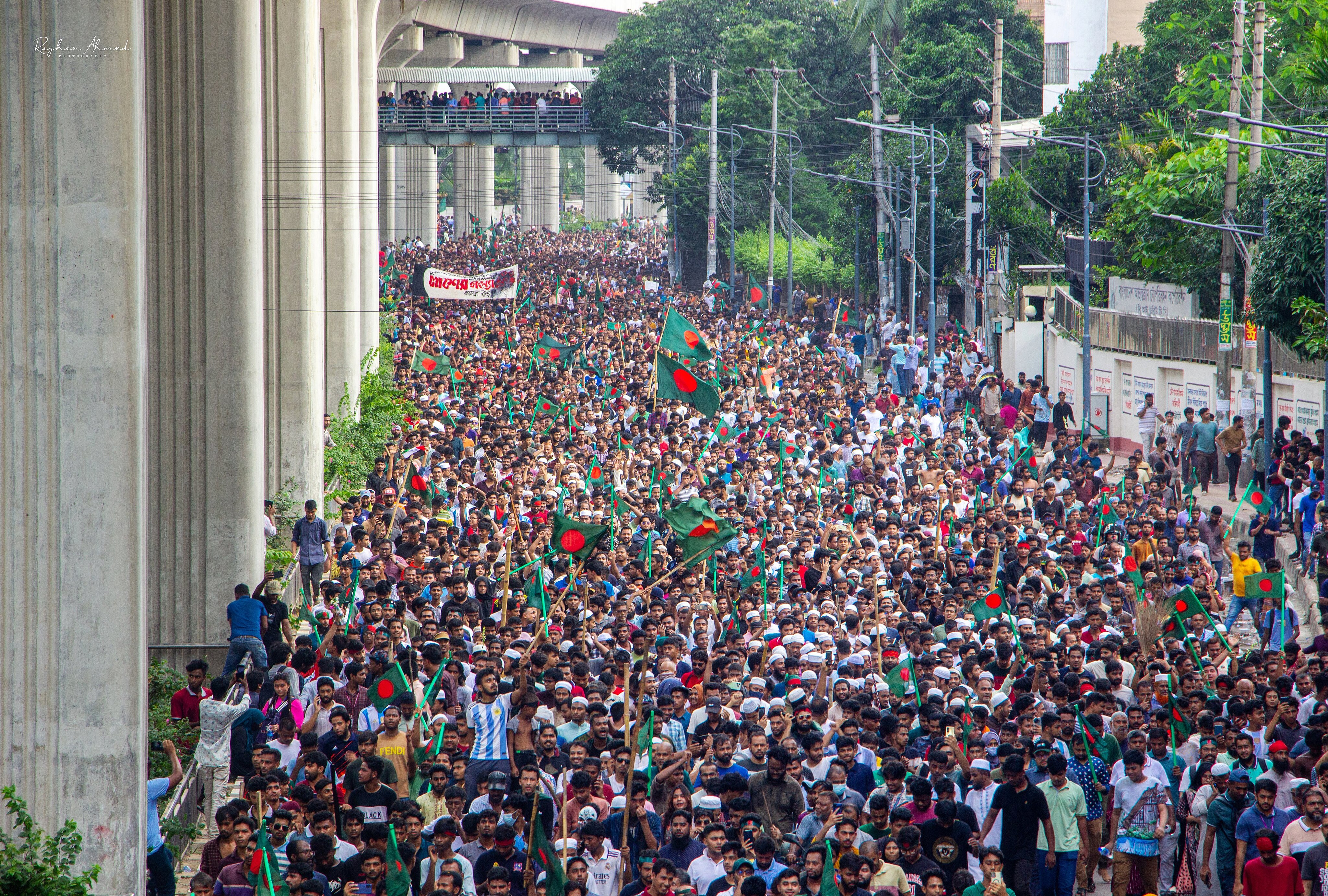News
How Bangladesh’s Art Community Has Responded to a Political Revolution

On August 5, the prime minister of Bangladesh, Sheikh Hasina, fled the country, ending her 15-year rule, and the army named a caretaker government to be led by economist and Nobel Peace Prize laureate Muhammad Yunus. Over the past several weeks, Bangladeshi students have been met with a deadly government crackdown on rallies against the civil service job quota system. Faced with nationwide curfews and media blackouts, artists stepped up to document the political upheaval and further organize protests, with various cultural institutes voicing their support for the demonstrations.
The protests began in early July after a High Court reinstated a 30 percent quota earmarked for descendants of freedom fighters who were involved in the nation’s 1971 liberation war against Pakistan. (Amid rampant unemployment, the system has long been criticized for favoring supporters of Hasina’s party, the Awami League, to the exclusion of other qualified candidates.) As a result of the government’s violent response to the initially peaceful movement, several student leaders were detained while 300 people were killed, including nearly 100 during the first weekend of August.
On July 18, Drik Picture Library, an independent media organization co-founded by renowned photographer Shahidul Alam, announced the closure of Drik Gallery “[i]n solidarity with the students [sic] call for total shutdown in the country.” Alam—who is known for his extensive social activism, including being jailed 107 days in 2018 for criticism of the government—wrote an article for Al Jazeera on July 23, in which he provided a comprehensive documentation of the protests despite the media blackout, and chronicled later events on his blog and social media.
Theater, performance, and moving image-based artist Reetu Sattar attended a protest rally in the Bangladesh capital’s Farmgate area on August 1, and was one of several speakers who denounced the government’s brutal response to the student-led movement. Unfortunately, the rally was cut short due to heavy rainfall.
On August 4, the Samdani Art Foundation, which organizes the triennial forum known as the Dhaka Art Summit, posted an official statement on Instagram: “We extend our condolences to the victims’ families and stand in solidarity with the students. The Dhaka Art Summit supports the students’ quest for justice and calls for urgent action to address these injustices.” The message was later circulated on Facebook by the Foundation’s curator, Ruxmini Reckvana Q. Choudhury.
Throughout the chaos, Instagram has remained a popular platform for voicing one’s stance. On his account, Michigan-based artist and author Debashish Chakrabarty shared posters that he has designed to spread awareness on, and provide information about, protest details. One post in particular announced that the Photographers’ Society of Bangladesh planned and organized a protest at the Central Shaheed Minar, a monument in Dhaka city, to show solidarity with the antidiscrimination student movement on August 4. The event was also shared on Instagram by documentary photographer Munem Wasif, who has documented many of the major protests throughout the capital before and after Hasina’s departure.
Following the collapse of Hasina’s rule, protestors swarmed sites associated with the departed leader, setting fire to the Bangabandhu Memorial Museum—the former residence of Sheikh Mujibur Rahman, Hasina’s father and the country’s ex-president, who was assassinated in 1975—and the Indira Gandhi Cultural Centre (IGCC), which promotes ties between India and Bangladesh. Writing in the Prothom Alo newspaper, Naeem Mohaiemen, a historian and associate professor of visual arts at Columbia University, reflected on the lost history and artifacts burned in the fire at the Bangabandhu Memorial Museum. “Let us not start this era by erecting a new hagiography that insists that every part of liberation war history that involves the Awami League should now be erased,” he cautioned.
Pathshala South Asian Media Institute, a school for photography and photojournalism founded by Alam in 1998, expressed their support for the students in an Instagram post. When the prime minister was forced to resign two days later, however, the Pathshala Institute also took to Facebook to condemn rising violence, writing: “Our unrest and destructive activities are questioning our moment of victory. So we request everyone to maintain peace and refrain from unnecessary destructive activities.” Speaking to the the Wfdd US public radio station on August 5, Alam said that while there were “pockets of violence,” many “responsible people” have sought peace.
The coordinators of Bangladesh’s student protest movement and two University of Dhaka professors met with the national army chief, Gen Waker-Uz-Zaman, on August 6. Zaman has stated that an interim government will hold elections as soon as possible after consulting all parties and stakeholders. In the meantime, as the 84-year-old Yunus leads the interim government at the request of student protest leaders, many believe that there is still more to be done. Beyond overthrowing the current government, the Students Against Discrimination group seeks to “abolish fascist systems forever,” rejecting the military-based leadership which currently reigns supreme.
Camilla Alvarez-Chow is an editorial assistant and Annette Meier is an editorial intern at ArtAsiaPacific.







